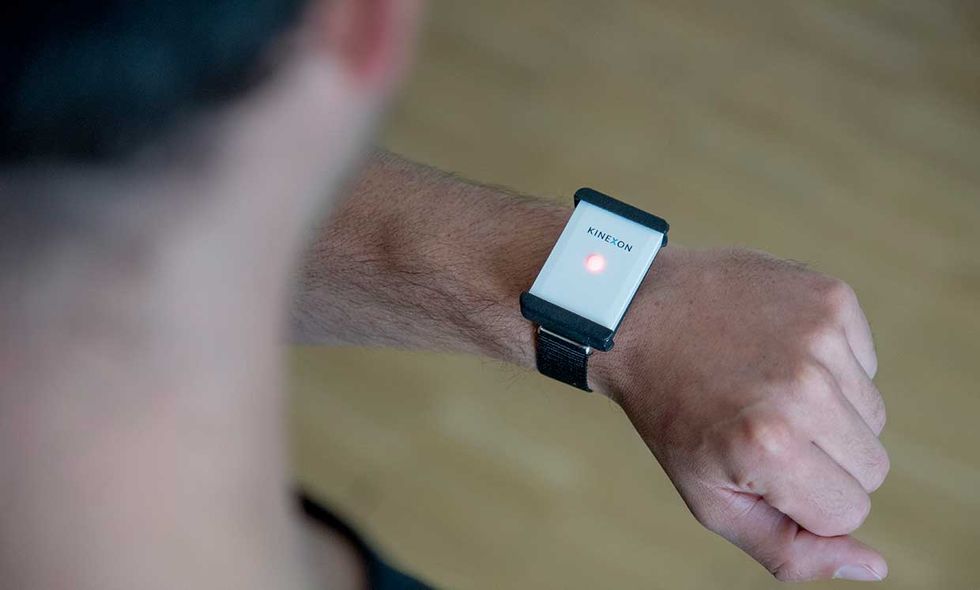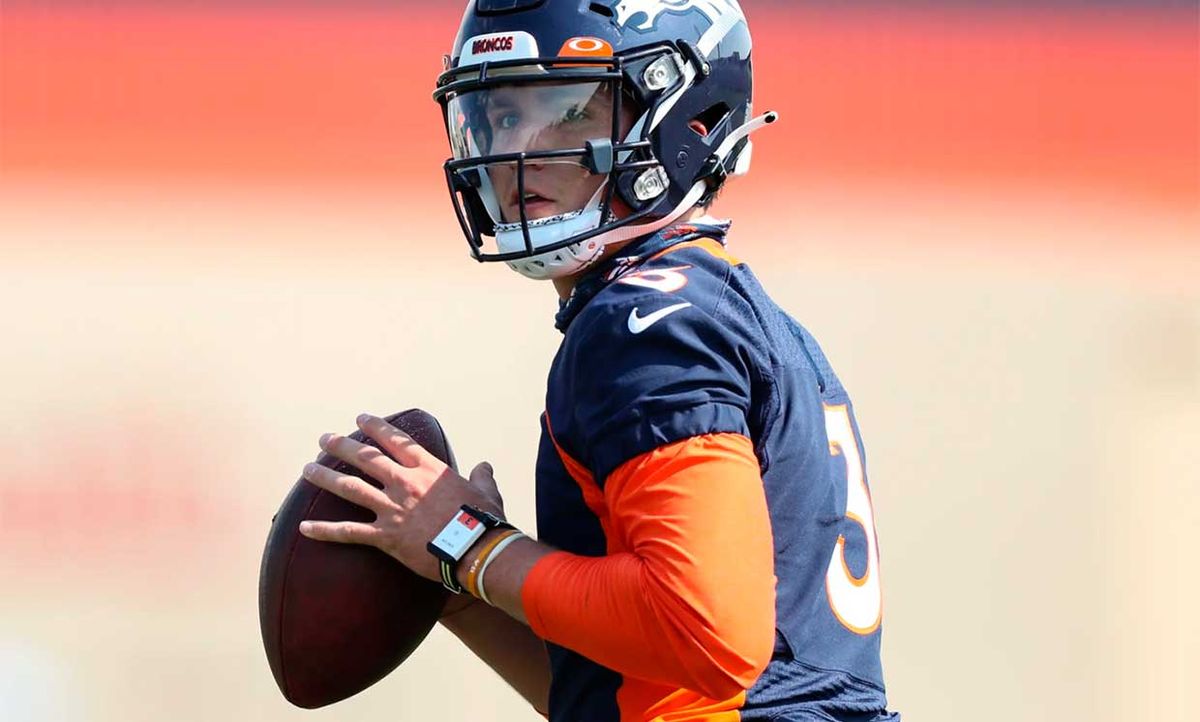In the U.S. during the coronavirus pandemic, professional basketball and football seasons were made possible in part by contract tracing—specifically by Kinexon's ultra-wideband contact tracing system. Ultra-wideband (UWB) is a short-range and high-bandwidth radio technology that, in this case, is contained primarily in Kinexon’s wristband sensors.
Today a small but growing number of smartphones and smartwatches—including flagship models from Samsung and Apple—support UWB. And as this feature appears only to be on the rise in mobile devices, UWB-enabled smartphones could become the backbone of future contact tracing apps.
The most widely used non-UWB contact tracing apps have relied upon Bluetooth technology, which is of course already widely available on smartphones. However, Bluetooth was not designed for proximity detection. By comparison, “peer-to-peer” fine ranging is one of UWB’s strengths. So UWB technology has naturally emphasized applications that rely on accurately detecting the location of other UWB sensors within relatively short ranges. The Kinexon SafeZone system was, in fact, originally designed for keeping track of workers in industrial workplaces during the pre-COVID-19 era.
Leslie Ann Saxon, executive director and founder of the Center for Body Computing at the University of Southern California says in pre-pandemic times, UWB had been used for safety applications in workplaces. But, she adds, its fine ranging strengths have shown additional promise in contact tracing since the COVID-19 lockdown.
Benchmark testing suggests that UWB performs better than Bluetooth in the context of indoor obstructions. At least that was one conclusion of a paper uploaded in January to the arXiv preprint server by researchers at Johannes Kepler University Linz in Austria. UWB also demonstrated more precise distance estimates irrespective of how the phone was being carried on or near the human body.
According to a January report, UWB allowed U.S. National Football League officials and coaches to identify and quarantine players and staff who’d been exposed to COVID-19. The UWB sensors revealed that some COVID-19 transmissions happened outside what the CDC categorizes as “close contact”—i.e. exceeding 15 cumulative minutes per day within 1.8 meters (6 feet) of a person with COVID-19.
The NFL’s findings led the league to revise its definition of a “high-risk contact” and update guidelines to include more mandatory mask wearing and consideration of indoor ventilation. As with any digital contact tracing system, the UWB sensors proved helpful in quickly identifying risk of exposure. But players and staff still needed to strictly follow other measures to protect themselves.
“I like the ultra-wideband limitations pointed out in the NFL-CDC paper, because everything needs to be adhered to,” Saxon says. “It’s a whole ecosystem of precaution.”
It’s likely that more workplaces and venues could decide to adopt the Kinexon sensors for employees or visitors to wear either around their neck or on their wrists. U.S. Major League Baseball has also recently mandated that its players wear Kinexon sensors during their spring training. But UWB cannot immediately supplant Bluetooth in digital contact tracing and exposure notification apps, because most phones still lack UWB capability.
“There's things you can do with Bluetooth to make it much more accurate,” says Marc Zissman, associate head of the Cyber Security and Information Sciences Division at MIT Lincoln Laboratory. “Bluetooth is ubiquitous, but ultra-wideband is not on every phone.”
UWB is just one of a handful technologies that could play a bigger role in next-generation digital contact tracing, Zissman says. For example, ultrasound could be incorporated into a contact tracing system for existing smartphones. Po-Shen Lo, a mathematician at Carnegie Mellon University, has developed a contact tracing app called NOVID that incorporates both Bluetooth and ultrasound.
But whatever the technology, digital contact tracing must still deal with the challenge of getting enough people to either carry around specialized wearable devices or download and use the relevant smartphone apps. Getting more people to use such apps has proven difficult because of privacy concerns and other considerations.
“The ultra-wideband in a phone may have a greater accuracy or fidelity as it relates to the location of that phone,” Saxon says. “But it still doesn’t solve some of the other issues we brought up in our paper related to if people are going to comply with digital contact tracing.”

Many contact tracing apps are currently based on the Google/Apple Exposure Notification (GAEN) system that was released as an API for developers to create Bluetooth-based apps compatible with both iOS and Android phones. GAEN became the basis for apps available in 55 countries and 24 U.S. states or regions. According to Myoung Cha, senior director for health strategic initiatives at Apple, more than 125 million people worldwide opted in to these apps. He detailed the company’s findings during a webinar organized by the U.S. National Institutes of Health earlier this month.
Whatever their imperfections, Bluetooth-based apps may be working well enough to demonstrate the positive impact digital contact tracing can have during the pandemic. This may be difficult to measure directly, although indirect evidence is available.
According a preprint paper (PDF) uploaded by a team at the University of Oxford and the Alan Turing Institute in London, nearly 25 percent of the UK’s population has been using a contract tracing app from the country’s National Health Service. The paper estimates that the app may have already prevented upwards of 279,000 coronavirus cases and 4,100 deaths.
Christophe Fraser, senior group leader in pathogen dynamics at the Big Data Institute in the University of Oxford, also reported that every one percent increase in app adoption may have led to a more than two percent reduction in the number of COVID-19 cases.
In other words, in some cases Bluetooth may be sufficient for a viable contract tracing app that can make a real difference, while in other cases deep-pocketed organizations may decide it’s worth the extra US$100 to $200 for each person to have their own UWB sensor.
“Bluetooth works as it is right now, and there's always room for improvements,” Zissman says. “And ultra-wideband might be one of those improvements, but that might not be the most important thing to work on first.”
Jeremy Hsu has been working as a science and technology journalist in New York City since 2008. He has written on subjects as diverse as supercomputing and wearable electronics for IEEE Spectrum. When he’s not trying to wrap his head around the latest quantum computing news for Spectrum, he also contributes to a variety of publications such as Scientific American, Discover, Popular Science, and others. He is a graduate of New York University’s Science, Health & Environmental Reporting Program.



